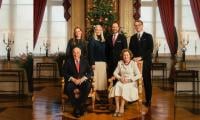The Khyber Pakhtunkhwa budget, presented on Friday (June 13), seems almost too good to be true. It does not impose any new taxes, raises salaries and pensions of government employees by 10 per cent and seven per cent, respectively, and raises the minimum wage from Rs36,000 to Rs40,000. It promises all of this along with a surplus of Rs157 billion, with expenditures at Rs1,962 billion. The health budget has been increased to Rs276 billion for 2025-26 from Rs232 billion in 2024-25, representing a 19 per cent rise, and the Sehat Card Plus programme’s budget has been raised 25 per cent to Rs35 billion. The elementary and secondary education budget has also been boosted by 11 per cent to Rs363 billion and a special education emergency has been announced to improve literacy and reduce the number of out-of-school children, with Rs5 billion allocated for this initiative. About Rs158 billion has been set aside for police and law and order – an increase of 27 per cent. Delivering all of this while imposing no new taxes and cutting some old ones and still managing to keep revenues below expenditures is very impressive. That is, if the KP government actually does deliver. While the province expects to collect Rs129 billion, federal receipts are expected to do most of the heavy lifting and this is where the questions about delivering begin.
Some reports claim that the budget figures of receipts presented by the KP government appear to be exaggerated, revealing a consistent gap of over Rs500 billion between projected and actual transfers from the federal government. These shortfalls in federal transfers reportedly go back all the way to FY2021-22. In the ongoing 2024–25 fiscal year, KP has so far received Rs1,273 billion against an allocation of Rs1,754 billion, resulting in a shortfall of Rs481 billion. For 2025–26, the government has projected a federal transfer of Rs21802 billion, but officials reportedly doubt whether the actual receipts will match the projection, given past performance. Given the heavy reliance on federal transfers to meet provincial expenditures, any further shortfalls might result in some significant adjustments. It is hoped that, should cuts eventually have to be made, they will not fall on health and education. Officials have warned that overreliance on federal transfers, without ensuring actual disbursement, continues to hurt KP’s development agenda and delays in promised funds have already impacted key services and development schemes, especially in the merged tribal districts.
However, it is important to note that problems of this nature are not confined to KP. Unrealistic projections and targets and gaps between promises and capacity to deliver have been a major theme of this budget season at both the federal and provincial levels. Politicians are not assuaging anyone by promising to do things they likely cannot, they are only undermining their own credibility. It is also unwise to raise hopes only to disappoint people in the end. More importantly, it is frustrating to note that despite transferring so many important responsibilities to the provinces in the post-18th Amendment era, especially when it comes to health, education and law enforcement, they are still so heavily dependent on the centre for revenues. A system where provinces have so many crucial fields under their control but so little capacity to actually generate the revenues needed to meet their needs independently seems to be set up for disappointment.















